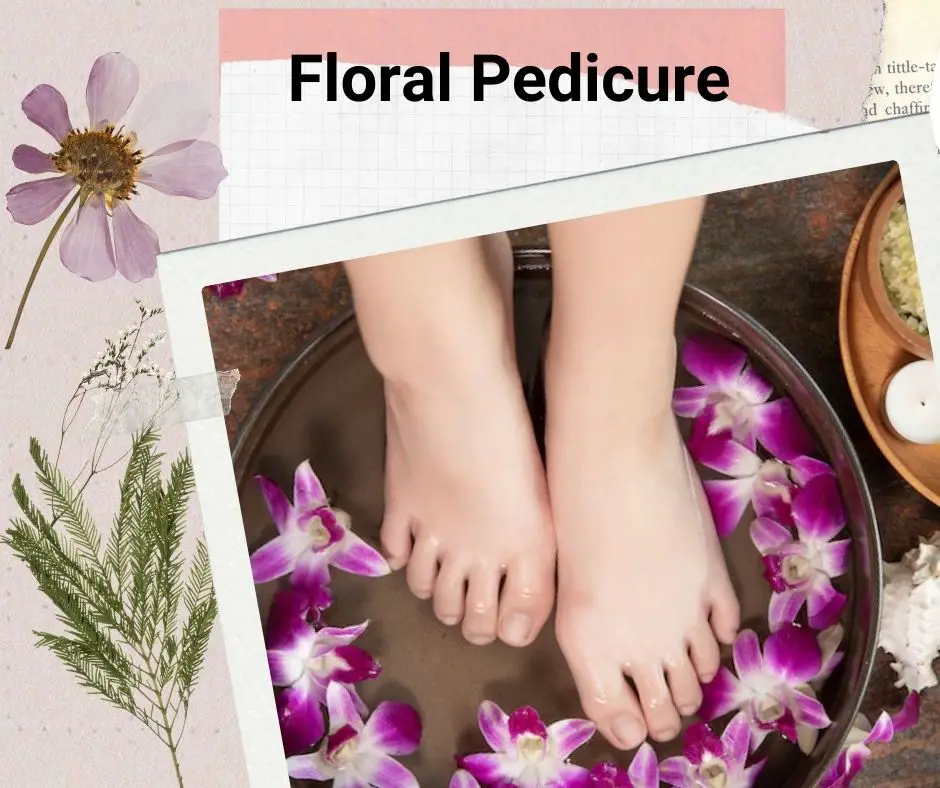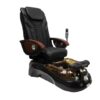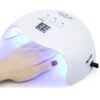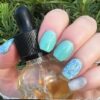Pedicure is one of the latest trends in nail care and celebrities like Rihanna, JLo, Emma Stone, and high-paid models like Gisele Bundchen, Cara Delevingne, and Adriana Lima are often shown to flaunt Gel, Acrylic Toenails on their Instagram.
If you are a beginner and for the first time you want to try a pedicure, here are 29 things you should know about Pedicure etiquette, tips, dos, and don’ts. Read on!

Content:
- Should you cut your toenails before a pedicure?
- When should you get a pedicure?
- Two Pedicure Treatments You Must Know About
- Additional Pedicure Services & their costs
- You can ask for a pedicure without polish
- How much to tip for pedicure?
- How often should you get a pedicure?
- How long after pedicure can I put on socks?
- Do you have to wear flip-flops after a pedicure?
- Will a pedicure fix an ingrown toenail?
- When should you not get a pedicure?
- What kind of pedicure lasts the longest?
- How long to wait after pedicure to shower?
- How long after pedicure can I work out?
- How long after pedicure can I wear shoes?
- How long after pedicure can I swim?
- Is it okay to get a pedicure after a massage?
- What should you not do before a pedicure?
- Does a pedicure include a leg massage?
- Is it rude to get a pedicure without shaving?
- Is it rude to read during a pedicure?
- Should I prep my feet for a pedicure?
- How do you prepare your toenails for pedicure?
- What to wear when going to get pedicure?
- How to book, cancel or reschedule pedicure appointment?
- Winter pedicure Etiquettes
- Stop wearing these in pedicure appointments
- Can I wear closed shoes after pedicure?
- Should I remove nail polish before pedicure?
1. Should You Cut Your Toenails Before Getting A Pedicure?
There is no definitive answer since you need to consider multiple factors. You may want to consider the type of pedicure you’re getting, your personal health history, and the weather conditions. Some people believe that it’s crucial to avoid cutting or trimming nails before a pedicure since this can lead to ingrown toes. On the other hand, some professionals feel that it’s unnecessary to wait because clippers or scissors won’t damage nail bed tissue as much as sandpaper. Ultimately, it’s best to ask your beauty professional about their policy regarding toenails before receiving a service.
2. When Should You Get A Pedicure?
When getting a pedicure, the frequency changes depending on the type of foot care you are looking for. If you want primary foot care like regular polish and cuticle removal, you can go at any time. However, if you seek more specialized services such as ingrown toenail treatment or callus removal, make appointments in advance.
Once again, no specific timeframe is necessary for all pedicures; however, scheduling your appointment ahead will allow your therapist to plan an appropriate session explicitly tailored to your needs.
Pedicures are often recommended one to two times per month, depending on the severity of your foot odor. If you have thin or brittle nails, they may require more frequent care. In addition to giving your feet a beautiful polish and exfoliation, a pedicure can also include filing and shaping your nails.
3. Two Pedicures You Must-Know About:
- Claw Foot Pedicure: This type of pedicure involves using tiny, sharp claws to remove dead skin and debris from your feet. Experts often recommend this for people with dry or cracked feet because it helps restore moisture and balance.
- OPI pedicure: This type of pedicure uses a variety of polish, lotions, and creams that target specific areas on your foot, such as the ball-and-socket joints or Toes. Experts recommend this for those who have trouble getting their regular foot massage because this procedure can help reduce tension in these areas.
4. Additional Pedicure Services & Their Costs
Pedicures are among the most popular services in salons, and for a good reason. They offer a variety of benefits that can improve the appearance and feel of your feet. Here are some additional pedicures services that you may want to consider:
- Foot Scrub: This service includes a scrub of the feet using natural ingredients and a conditioning treatment with moisturizers and essential oils. The cost for this service is $30.
- Pedicure with Shellac Service: This option includes exfoliation, nail filing, and the application of durable shellac polish. This service ranges from $60-$120, depending on the level of customization desired.
- Mani/Pedi Combo Package: This package combines both a mani (pedicure) and French manicure at one time; it costs $65-85 plus tax
5. You Can Ask For Pedicure Without Polish
Yes, you can always request a pedicure without polish. It is an additional service that many nail salons offer their customers as an added convenience. By not having to paint your nails in advance, you can enjoy a professional treatment at a fraction of the cost.
6. How Much To Tip For Pedicure?
Here are a few general guidelines for how much to tip when receiving a pedicure:
$10-15 is typically the standard amount, but it is always up to your discretion. Some people feel that tipping more than $15 leads to an excessive level of service and does not reflect appropriately on the skill and time put into the pedicure. On the other hand, others believe that a small gratuity goes a long way in making someone’s day. Ultimately, it is best to leave something extra if there are any unexpected costs or expenses associated with the service.
7. How Often Should You Get A Pedicure?
The frequency of a pedicure will vary depending on your specific needs and tastes, thus, there is no uniform answer to this topic. However, experts generally recommend getting regular pedicures at least every two weeks to keep your feet healthy and looking great.
During a regular Pedi, your technician will cleanse and polish both the exterior and interior of your feet using various methods such as scrubs, polishes, waxing services (with or without heat), etc. This routine can help to reduce dry skin conditions caused by friction or excessive walking, protect against fungal overgrowth (which can cause pain in the heel area), remove built-up calluses/dry skin from rugged shoes/sandals, etc., decrease toe odor (especially during hot weather), treat ingrown nails properly, promote nail growth & improve blood circulation overall. In addition to all these benefits for foot health – essential for long-lasting beauty – getting a Pedi also often relaxes nerves making us feel more comfortable even when we’re not physically active!
8. How Long After Pedicure Can I Put On Socks?
After getting a pedicure, experts generally recommend waiting at least 30 minutes before putting on socks. The acid in the pedicure can break down your skin’s barrier and make it more susceptible to infection. Additionally, wearing socks after a pedicure will help reduce foot odor.
9. Do You Need To Wear Flip Flops After A Pedicure?
While there is no universally accepted answer, most pedicure experts recommend that you avoid wearing flip-flops after your appointment. Flip-flops can contain microorganisms that could aggravate your skin and cause discomfort or infection. Instead, wear slippers or shoes that are easy to remove – like and als– when leaving the salon.
10. Will A Pedicure Fix An Ingrown Toenail?
The severity of an ingrown toenail may vary depending on the individual. Generally speaking, though, a pedicure might not be enough intervention to fix an ingrown toe; you may need professional treatment if it’s severe. If you do get serious about fixing your injured toe, make sure that you follow these steps:
Stop all activity and supine (on your back) for at least 30 minutes to let the toe heal properly from the inside out. It will help reduce inflammation and speed up the healing process.
Remove any nail polish or other chemicals that could aggravate or further injure the tissue around your toes before getting started on treatment. These include acetone, peroxide vapor, camphor oil, creams containing drying agents like witch hazel, commercial vinegar mouthwash with tartar control, and hydrogen peroxide. Spit everything out! If swallowed, soap can also cause mild irritation, so avoid using harsh scrubbing agents until after the injury has healed completely (about 7 days). Rinse thoroughly daily with warm water several times, including underfoot areas while lying down.
11. When Should You Not Get A Pedicure?
While a pedicure is typically safe, there are times when it might not be the best decision for you. If you have any medical condition that requires therapy by someone other than a doctor, then a visit to the spa may not be in your best interest. In addition, if you experience pain during or after your Pedicure appointment, contact the salon immediately and ask to speak with their supervisor.
If these symptoms persist even after speaking with the manager, it may be time to seek another foot care option. Many factors – such as skin sensitivity and nail fungus – can lead to discomfort while receiving a pedicure. So, always consult with your doctor or healthcare provider before scheduling an appointment at a beauty salon!
12. What Kind Of Pedicure Lasts The Longest?
No one type of pedicure lasts the longest, as each person’s nails are different and need individual care. However, a standard French Pedicure will last around two weeks, while an exfoliating or polishing pedicure can last four weeks. Gel pedicure often lasts 4-6 weeks depending on your lifestyle. If you have dry skin or issues with ingrown hairs, it may be necessary to have your nails treated more frequently to achieve optimal results.
When choosing a pedicure salon, ask which treatments they offer and how often you should get them to maintain their effectiveness. Also, ensure that the salon has a good reputation and follows professional standards when providing foot care services. You can ensure that you’re getting the best possible service for your money by doing your research ahead of time.
13. How Long To Wait After Pedicure To Shower?
There is no correct answer to this question, as it depends on your personal hygiene preferences. However, typically you should wait at least 10 minutes after a pedicure before showering. It allows the excess polish and chemicals used during the pedicure to sweat off and evaporate. Additionally, it gives your feet time to dry properly to avoid getting an infection later.
14. How Long After Pedicure Can I Workout?
You should avoid working out immediately after having a pedicure, as the oils and other chemicals used in this process can irritate your skin. Instead, it is best to wait at least 2 hours before undertaking any strenuous activity. If you are still feeling uncomfortable, you may wish to refrain from working out at all.
In conclusion, while there isn’t a strict rule on how long you have to wait before a workout, caution when dealing with new substances or groups of chemicals is always advised for safety reasons.
15. How Long After Pedicure Can I Wear Shoes?
When it comes to wearing shoes after a pedicure, there is no set rule. However, most experts recommend waiting at least two hours before putting on your new footwear. The dead skin and nails removed during the pedicure can clog up your pores and cause bacterial overgrowth, leading to toe fungus or other nail infections. Additionally, you may want to avoid exposing your delicate feet to extreme temperatures by wearing outdoor shoes immediately after a pedicure.
16. How Long After Pedicure Can I Swim?
You should typically wait 48 hours after having a pedicure before participating in any vigorous activity, including swimming. The chemicals used in most pedicures contain Formaldehyde and Ammonia, which can cause skin irritation, allergic reactions, or even swelling. These chemicals are also dangerous when combined with chlorine or other water-based activities.
17. Is It Okay To Get A Pedicure After A Massage?
Yes, it is generally safe to get a pedicure after a massage. However, please notify your therapist right away if you experience any symptoms, such as pain or redness in the massage area. In addition, make sure to drink plenty of fluids and avoid taking ibuprofen or other anti-inflammatory medications until you have had time to consult with your doctor.
18. What Should You Not Do Before A Pedicure?
There are numerous elements that you should not do before your pedicure, including swimming and sunbathing. These activities can dehydrate the skin and cause it to become more susceptible to infection. Additionally, nail polish can chip easily when exposed to water or direct sunlight, leading to unsightly scratches.
To avoid any possible complications during your appointment, make sure to take all of the following precautions:
- Arrive early for your appointment.
- Dress comfortably.
- Remove all jewelry and bring a spare set of nails if necessary.
- Drink plenty of fluids beforehand (especially if you’re going straight from work).
- Schedule regular appointments so that you can get optimal care.
- Use sunscreen on top of what they apply at the salon.
19. Does A Pedicure Include A Leg Massage?
Yes, a pedicure typically includes a leg massage. It is an essential part of the body treatment and helps to reduce stress and tension in the lower legs. Additionally, it reduces cellulite formation by detoxifying and cleansing the skin. The therapist will use pressure and strokes from small to large areas on your feet, working gradually up your legs until you are fully relaxed. You will then receive additional treatments such as hot wax or polish applications to complete your experience!
20. Is It Considered Rude To Get A Pedicure Without Shaving?
It can be considered rude to get a pedicure without shaving, which will likely lead to skin irritation. If you’re going to have a foot spa treatment, it is polite to shave beforehand so that the therapist has an accurate visual of what they need to treat. Additionally, leaving hair on your feet can make them more susceptible to fungal infections and other health problems.
21. Is It Rude To Read During A Pedicure?
There is no universal answer to this question, as it depends on the individuals you are working with and their styles. Some individuals may find it rude if you are reading a book or newspaper while they’re doing your feet, while others may not have an issue with it at all. Ultimately, you should respect other people’s space and try not to block their views unnecessarily.
22. Should I Prep My Feet For A Pedicure?
Toenails can be a significant pain during a pedicure, so it is essential to take the time to prepare them properly. To start:
- Soak your toenails in warm water for around 10 minutes before beginning the actual pedicure. It will soften and sanitize them and make it easier to remove dirt and debris.
- Use a scrub brush or cotton ball soaked with pure soap to gently clean underneath your cuticles.
- After cleaning beneath your nail bed, apply moisturizer if desired.
- Dry off your feet thoroughly before applying any polish or particular treatments.
23. How Do You Prepare Your Toenails For Pedicure?
Toenail care is an integral part of a good pedicure, and there are a few steps that you need to ensure your toes look their best. The first step is to remove any old nail polish with liquid soap and warm water. It will help to prevent staining or bleeding during the pedicure process. Next, file down your nails using a coarse grit nail file. However, try not to overdo the filing, as this can cause additional damage. Do not use anything else on your nails besides this file – acetone/olive oil derivatives, cuticle creams, or other agents may damage the nail bed and lead to infection or even toe fungus! Finally, apply some pre-pedicular cream (available at most beauty stores) before scheduling your appointment for pedicure services.
By following these straightforward tips, you’ll be able to have beautifully soft feet every time you get serviced!
24. What To Wear When Going To Get Pedicure?
Pedicures are a popular beauty treatment that many people enjoy. When you decide what to wear, it is essential to consider the type of pedicure you will have. For example, if you have a French manicure, then wearing closed-toe shoes and avoiding exposing your feet to water or other liquids is recommended. On the other hand, if you have an open-toed pedicure where your feet will be immersed in warm water and scrubbed clean, it’s better to bring along sandals or flip-flops so that dirt and debris won’t get into your nails.
When choosing clothing for a pedicure, try not to wear anything too bulky or heavy; instead, choose items like skirts, dresses (especially maxi skirts), tank tops/bikini tops with straps over the shoulders etc. This way, everything stays put while they give you those shiny new toes!
25. How To Book, Cancel, Or Reschedule Pedicure Appointment?
When you book a pedicure appointment, be sure to include the date and time of your desired service. You may also need to specify whether you would like a manicure or pedicure, as prices vary based on the kind of pedicure service you book. Typically, appointments are scheduled for 30 minutes or shorter, depending on the salon.
If there is a conflict with your chosen date or time slot, please let the salon know as early as feasible so that they can adjust their schedule accordingly. If you cannot make it in for your appointment at all, please try to reschedule as quickly as possible by calling the salon directly and providing updated information about when you will be able to arrive and what type of alternative service(s) might work better for you. In most cases, you must make cancellations within 24-hours of making an appointment to receive a refund; however, some salons allow up to 7 days’ notice before any fees apply (such as charges related to scheduling fees).
26. Winter Pedicure Etiquettes
Wearing shoes after your pedicure in the winter can be a bit tricky. On the one hand, you want to protect your feet from freezing temperatures. On the other hand, you don’t want to get too wet and ruin your new polish! Here are some tips that should help:
- Invest in good quality waterproof sandals or boots to keep your feet warm and dry during bad weather conditions.
- If it is freezing outside, consider wearing socks with sandals or boots – this will add extra insulation and keep your feet inside!
- Remember to bring a pair of spare socks to be comfortable no matter what happens.
Most people should get pedicures every 2-3 months in winter, as this will help keep their feet and nails healthy. During the colder months, feet tend to become drier and cracked, which can cause serious nail problems. Pedicure visits also remove dead skin cells that accumulate on the soles of your feet during the day and can lead to fungal overgrowth or infection. In addition, regular foot care helps to reduce the risk of calluses and heel spurs. When it comes to pedicures in the winter, you want to make them as relaxing and enjoyable as possible. Follow these tips:
- Use a hot bath or shower before your appointment. It will help rid your feet of any oils and debris that may have built up during the day.
- Apply moisturizer before your appointment. It will keep your feet’s skin soft and hydrated all morning long, making it easier for the technician to apply polish without irritation.
- Avoid wearing tight shoes or socks – both of which can lead to rubbing on the soles of your feet.
27. Stop Wearing These In Pedicure Appointments
When it comes to wearing sandals in pedicures, many people understandably feel uneasy. Feet are often covered in bacteria when performing a pedicure, and some of those bacteria can end up on the sandal. Additionally, these delicate shoes may not be appropriate during foot treatments such as Reflexology or Shiatsu.
To avoid any potential health dangers associated with this practice, it’s essential to consult your nail professional before bringing out your new shoes for a Pedicure appointment! They will advise you on what type of shoe is safe for use during treatment and recommend other ways that you can enjoy your time at the salon without risk.
While there are many benefits to wearing leggings when you go for a pedicure, it is essential to factor in what will be comfortable and beneficial for you and the salon. If the salon has a specific dress code that restricts clothing, wearing leggings to a pedicure might not be the best option. On the other hand, wearing leggings may be acceptable if the salon allows modest clothing. Remember to ask before making your appointment!
28. Can I Wear Closed Shoes After Pedicure?
People often think that they can wear their closed shoes after having a pedicure. However, this is not always the case. Although wearing closed shoes right after your pedicure might seem convenient to avoid getting foot fungus or other foot-related infections, experts do not recommend it.
One of the primary reasons for this is that open wounds on your feet are an ideal environment for bacteria and fungal growth. Wearing closed footwear will only further promote these conditions by trapping dirt and debris inside the shoe, which can cause irritation and infection. In addition, wearing closed shoes after Pedi often causes dry skin due to friction against rough surfaces in the shoe interior. It can lead to cracking and dermatitis (a type of inflammation).
It is best practice to allow at least 24 hours from your last footstep before putting on closed shoes so that any residual moisture from your wet weather activity has time to dissipate completely.
Many people ask, “how to protect my pedicure in closed-toe shoes?” The answer is that you can apply a thin layer of polish or sealant to the shoe’s surface. It will help prevent staining and keep your feet dry while wearing them. Alternatively, if you don’t want to use polish or sealant, you can try using a foot cream that contains silicon dioxide. Silicon dioxide helps retain water and keeps your feet moisturized all day long.
29. Should I Remove Nail Polish Before Pedicure?
If you use a salon-quality pedicure, it is typically okay to leave your nail polish on. However, if you’re doing your nails at home, it is best to remove them before getting a pedicure. Many salon-grade polishes contain harsh chemicals that can damage the skin around the nails and lead to dryness or inflammation. In addition, some polishes may contain harmful UV rays that could penetrate the skin and cause potential health problems like sunburn or cancer.








